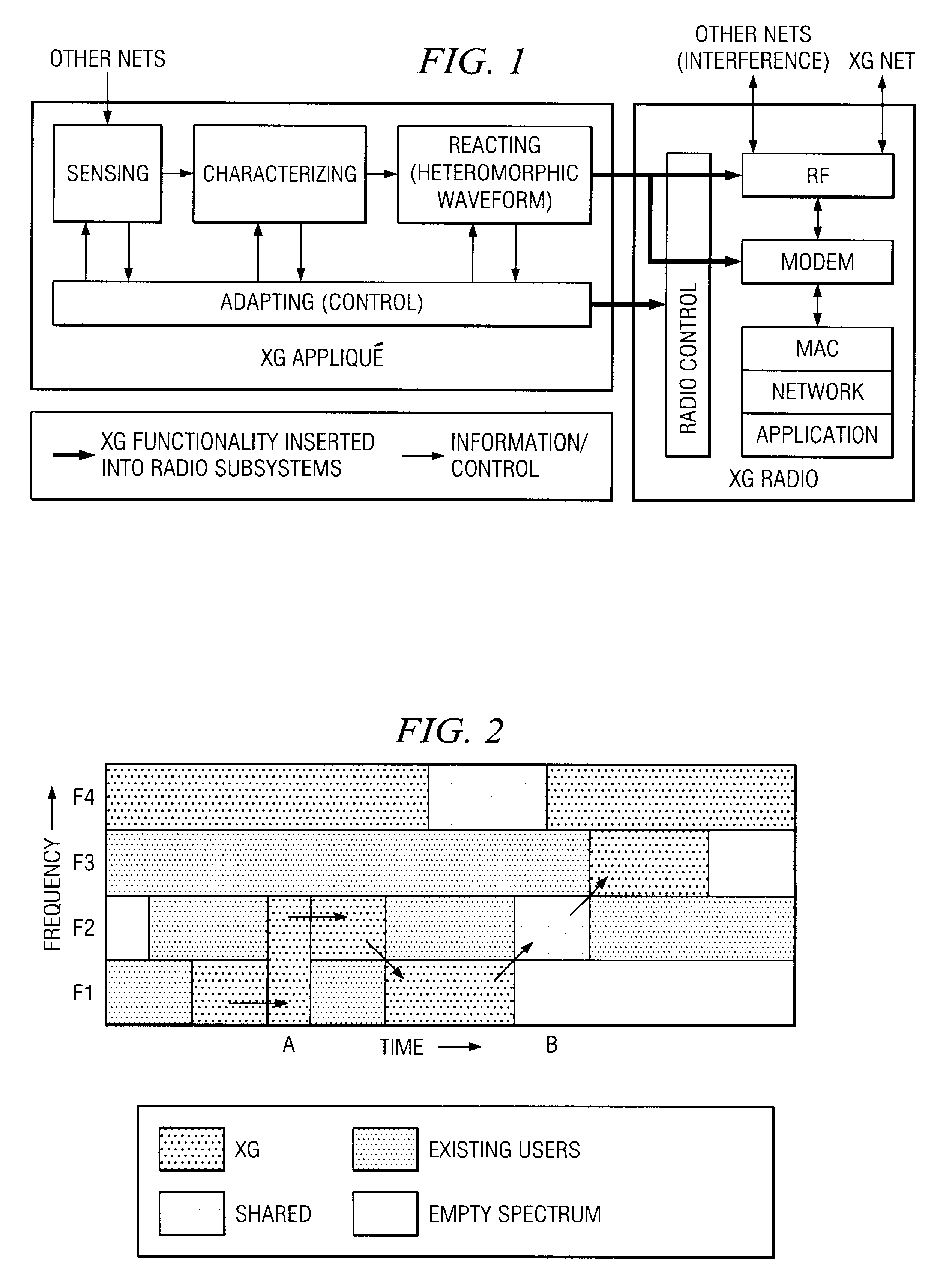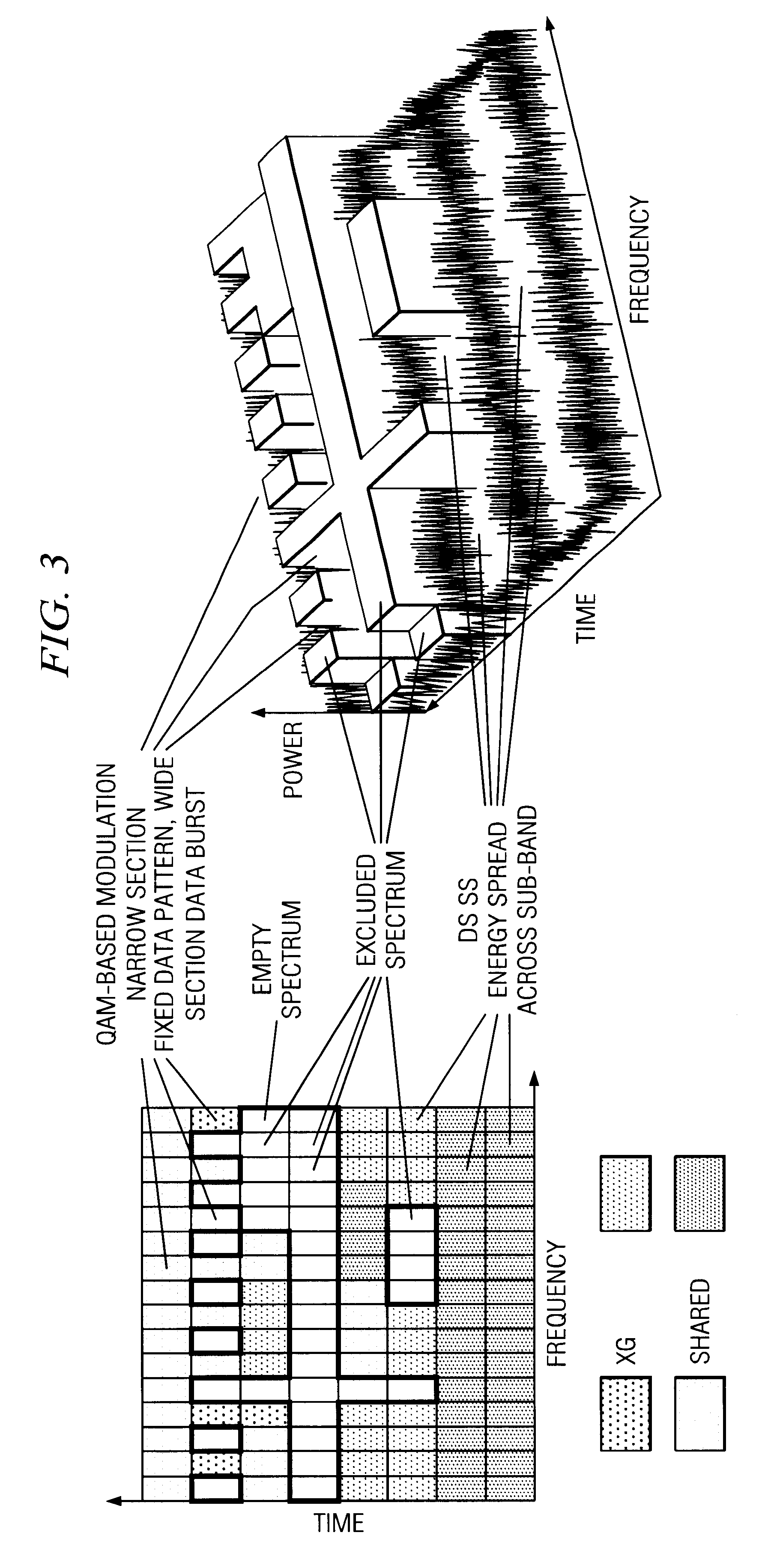Adaptive air interface waveform
a technology of air interface and waveform, applied in the field of wireless communication, can solve the problems of increasing the difficulty of adjusting the current wireless communication system to dynamic changes in the electromagnetic spectrum, affecting the quality of service, so as to reduce or eliminate the disadvantages and problems traditionally associated with the system
- Summary
- Abstract
- Description
- Claims
- Application Information
AI Technical Summary
Benefits of technology
Problems solved by technology
Method used
Image
Examples
Embodiment Construction
The present invention is a heteromorphic waveform that dynamically adapts in frequency, time, modulation, code, data rate, power, signaling, and multi-carrier organization. The waveform will increase spectral efficiency by enabling efficient, opportunistic and cooperative spectrum use. It reacts to time-varying channel and use conditions by seizing time / frequency / spatial “holes” and using the most efficient coding, modulation, signaling and multi-carrier organization consistent with non-interfering communications. The heteromorphic waveform of the invention is subdivided into two major components as follows:Adaptive Multi-Carrier Organization and Signaling configures a variable carrier frequency and variable bandwidth signal into one or many sub-carriers that are dynamically placed over a span of up to 250 MHz to avoid or minimize interference with transmissions of existing spectrum users. Each sub-carrier is independently modulated by direct sequence spread-spectrum (DS SS) for var...
PUM
 Login to View More
Login to View More Abstract
Description
Claims
Application Information
 Login to View More
Login to View More - R&D
- Intellectual Property
- Life Sciences
- Materials
- Tech Scout
- Unparalleled Data Quality
- Higher Quality Content
- 60% Fewer Hallucinations
Browse by: Latest US Patents, China's latest patents, Technical Efficacy Thesaurus, Application Domain, Technology Topic, Popular Technical Reports.
© 2025 PatSnap. All rights reserved.Legal|Privacy policy|Modern Slavery Act Transparency Statement|Sitemap|About US| Contact US: help@patsnap.com



